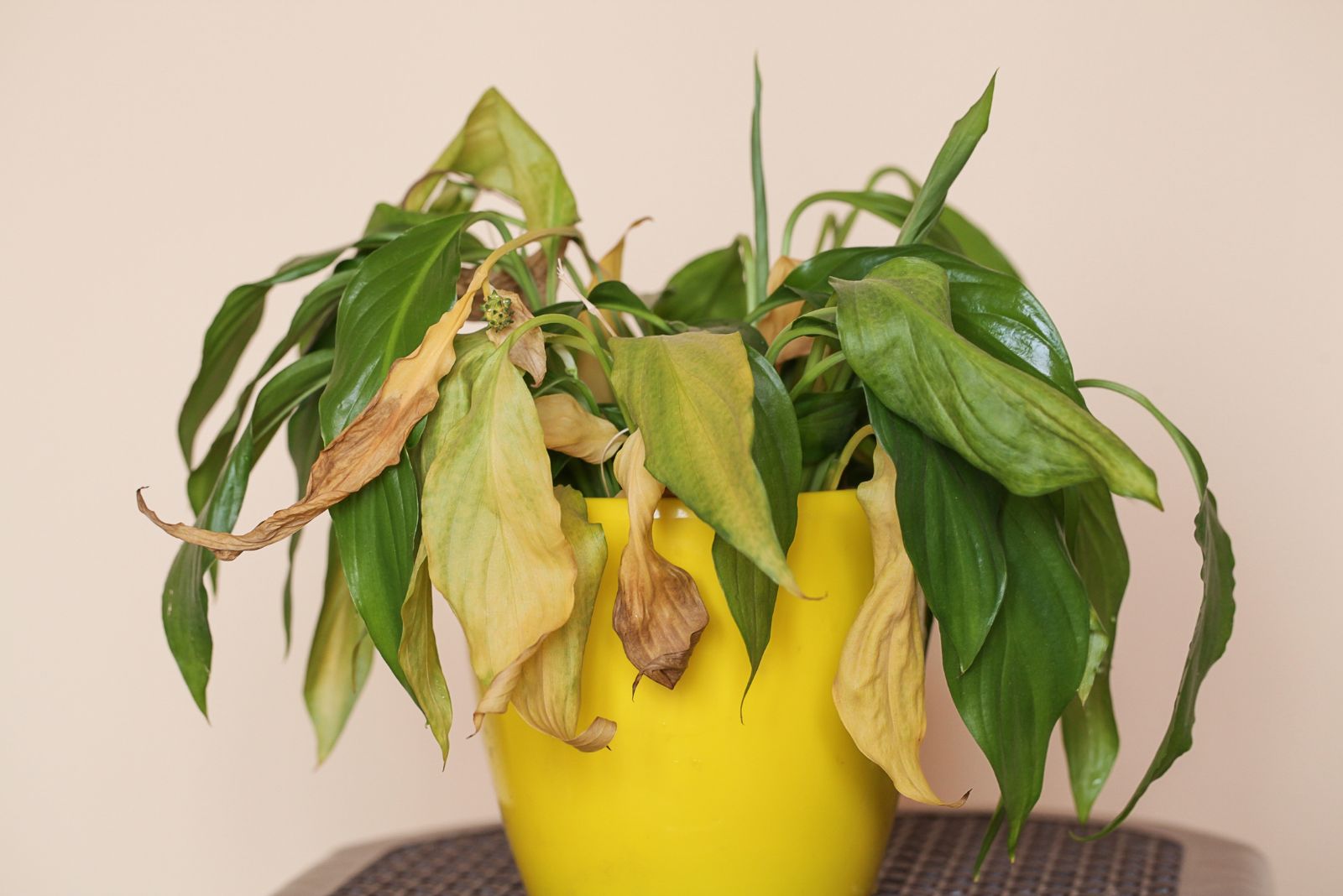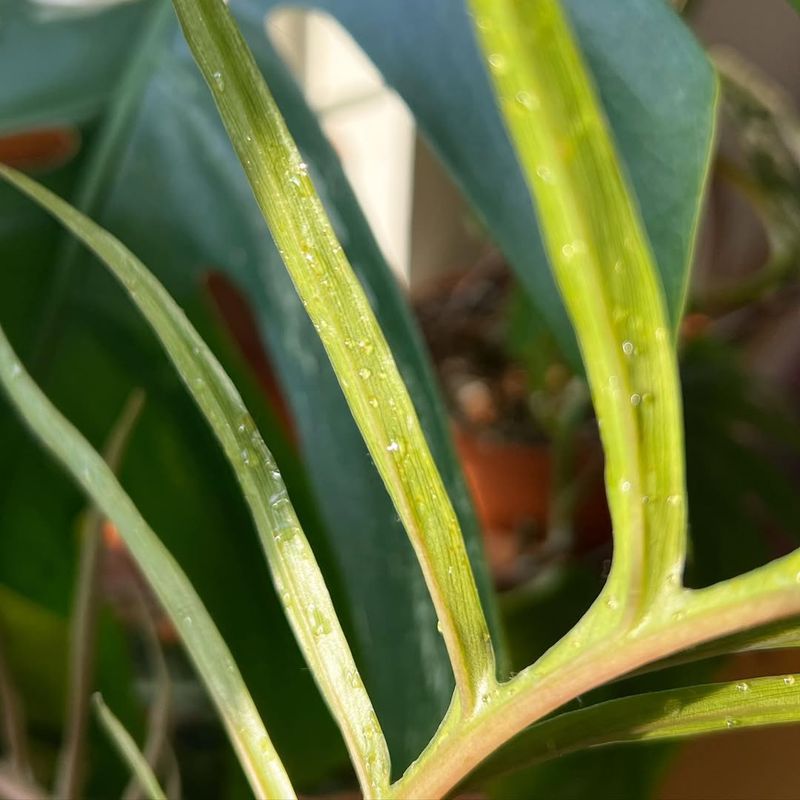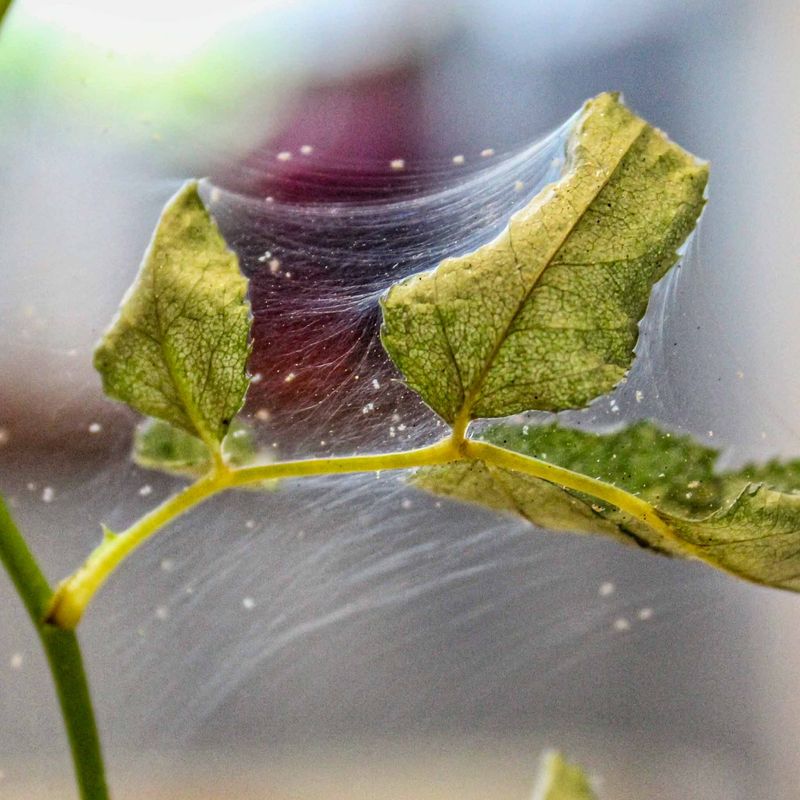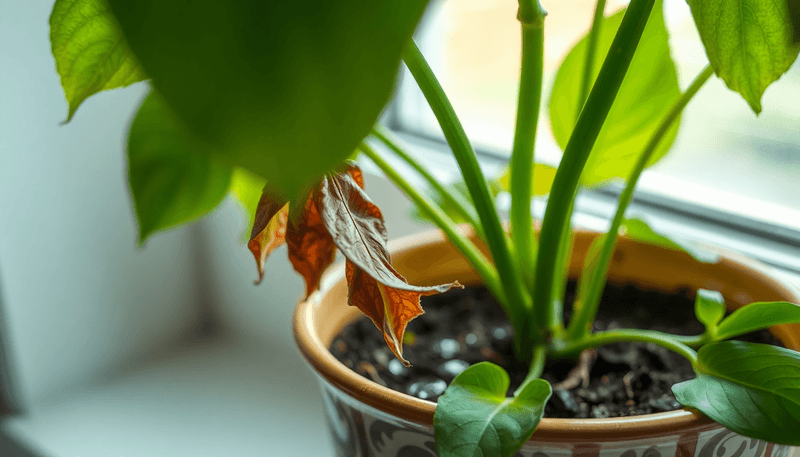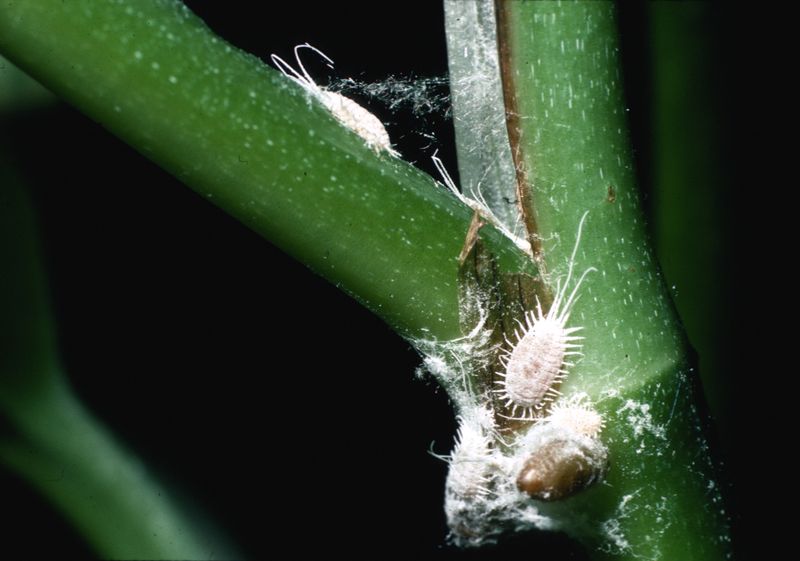Denver’s dry winter air can play tricks on even the healthiest houseplants, and pests often slip in long before anyone notices.
Tiny insects hide under leaves, in soil, or along stems, quietly causing trouble while the plant still looks perfectly fine on the surface.
A quick glance now and then is not always enough, as the early signs can be easy to miss.
By keeping a close eye on small changes in color, texture, or growth, homeowners can catch problems before they snowball.
A little attention goes a long way in keeping indoor plants thriving through Denver’s long, chilly season.
Sticky Residue On Leaves
Have you ever touched your plant and felt something gooey?
That sticky stuff is called honeydew, and it comes from sap-sucking bugs like aphids and scale insects.
These critters pierce the leaves to drink plant juice, then leave behind this sugary mess.
The residue can attract black sooty mold, making your plant look dirty and blocking sunlight.
Wipe leaves gently with a damp cloth and check the undersides for tiny bugs.
Acting fast helps prevent the problem from spreading to other plants nearby.
Yellowing Or Spotted Foliage
When leaves start turning yellow or develop weird brown spots, bugs might be stealing nutrients from your plant.
Spider mites and thrips are common culprits that damage leaf tissue as they feed.
Denver’s dry indoor air creates perfect conditions for spider mites to multiply quickly.
Look closely with a magnifying glass to spot these almost-invisible pests moving around.
Discolored leaves lose their ability to make food through photosynthesis.
Remove badly damaged leaves and treat the plant with insecticidal soap to stop further harm.
Tiny Bugs Crawling Around
Spotting actual insects walking on your plant is the most obvious sign something’s wrong.
Aphids, mealybugs, and fungus gnats are frequent visitors to Denver houseplants.
Aphids cluster on new growth and buds, while fungus gnats prefer moist soil where they lay eggs. Mealybugs look like tiny cotton balls hiding in leaf joints.
Check your plants weekly, especially after bringing new ones home from the store.
Early detection makes treatment easier and prevents a full-blown infestation that’s harder to control later on.
Webbing Between Stems And Leaves
Finding delicate webs stretched across your plant means spider mites have moved in and made themselves comfortable.
These microscopic arachnids spin silk as they travel and feed.
The webbing protects their colonies and helps baby mites spread to new areas.
Denver’s low humidity during winter months encourages rapid spider mite reproduction.
Spray plants with water to knock off mites and increase humidity around affected plants.
Severe cases might need miticide treatment, but consistent moisture control prevents future outbreaks naturally and effectively.
Wilting Despite Regular Watering
Your plant looks thirsty even though you just watered it yesterday?
Root-feeding insects like fungus gnat larvae might be chomping on underground roots.
Damaged roots cannot absorb water properly, causing leaves to droop and wilt no matter how much you water.
Scale insects on stems can also block water transport throughout the plant.
Gently remove the plant from its pot to inspect roots for damage or larvae.
Repot in fresh soil if needed and let the top layer dry between waterings to discourage gnats.
White Fuzzy Patches Appearing
Those white fuzzy spots that look like cotton aren’t mold, they’re actually mealybugs disguised in waxy protective coatings.
These sneaky insects hide in hard-to-reach places like where leaves meet stems.
Mealybugs multiply quickly and suck sap from plants, weakening them over time.
Their fuzzy appearance helps them blend in, so they often go unnoticed until populations explode.
Dip a cotton swab in rubbing alcohol and dab each bug directly to destroy them instantly.
Repeat treatments weekly until all signs disappear completely from your plant.
Stunted Or Distorted New Growth
New leaves coming in twisted, curled, or smaller than normal signal that insects are attacking the most vulnerable parts of your plant.
Aphids and thrips especially love tender new growth because it’s easier to pierce.
Their feeding injects toxins that deform developing leaves permanently.
Once damaged, these leaves won’t recover even after pests are gone.
Inspect new shoots regularly and remove badly damaged growth to redirect energy toward healthy development.
Treating infestations quickly protects future leaves from similar deformities and keeps your plant growing strong and beautiful.

